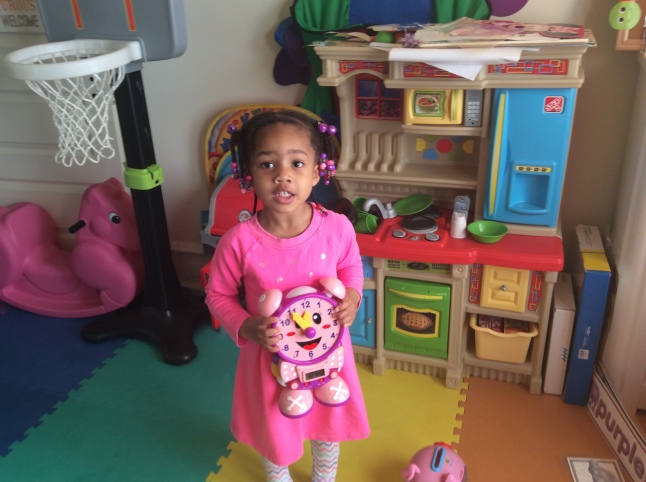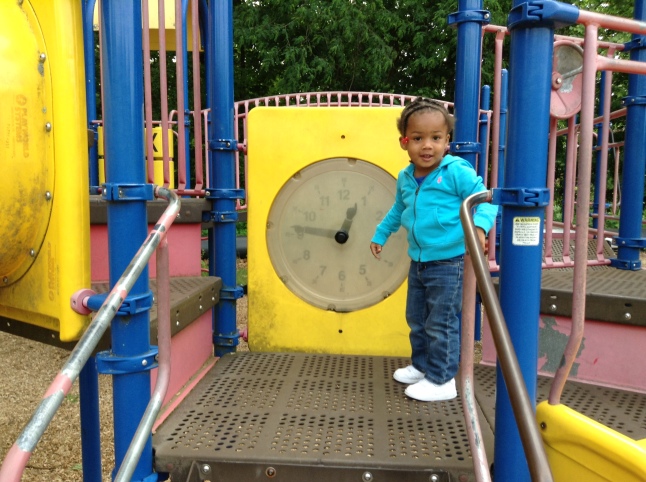
Quinn with her Talking Clock (March 2016)
“Mommy, what time is it?” My little girl inquires as we start our day. Within the past few months, my soon-to-be three year old has become more and more fascinated with the concept of time. Perhaps it has something to do with her father and I setting time limits with different activities and making a conscious effort to maintain a consistent daily schedule. I did a post in June 2015 shortly after Quinn turned two entitled, “Telling Time with a Toddler” discussing the technique I use to get Quinn to leave the park or wrap up an activity willingly.

Quinn Playing with the Clock at the Park (June 2015)
Now, she will inform me, “Mommy, may I have seven more minutes to use the iPad?” or “Let’s get ready for bath in five minutes.”
Since she wants to know what time it is throughout the course of the day and will even estimate what time it is based on the activity we are doing, my sister purchased her Telly the Teaching Time Clock, which comes in either pink and primary colors, for Christmas. Though she still has some years to go before she masters telling time by using the short and long hands, I love how the toy clock will say what time it is as she repositions the clock hands. It has piqued her interest, and Quinn will ask me, “Can we make the clock say 12 o’clock? That means it’s time for lunch!” The clock comes with a digital display as well and even has a setting to quiz a child on the time which I’m sure my little girl will look forward to using as she gets a little older.
It’s great when a toy can be an educational resource and teach a necessary skill as well. There just might be some adults who could benefit from using this talking clock as too.
All the best,
Tanya


